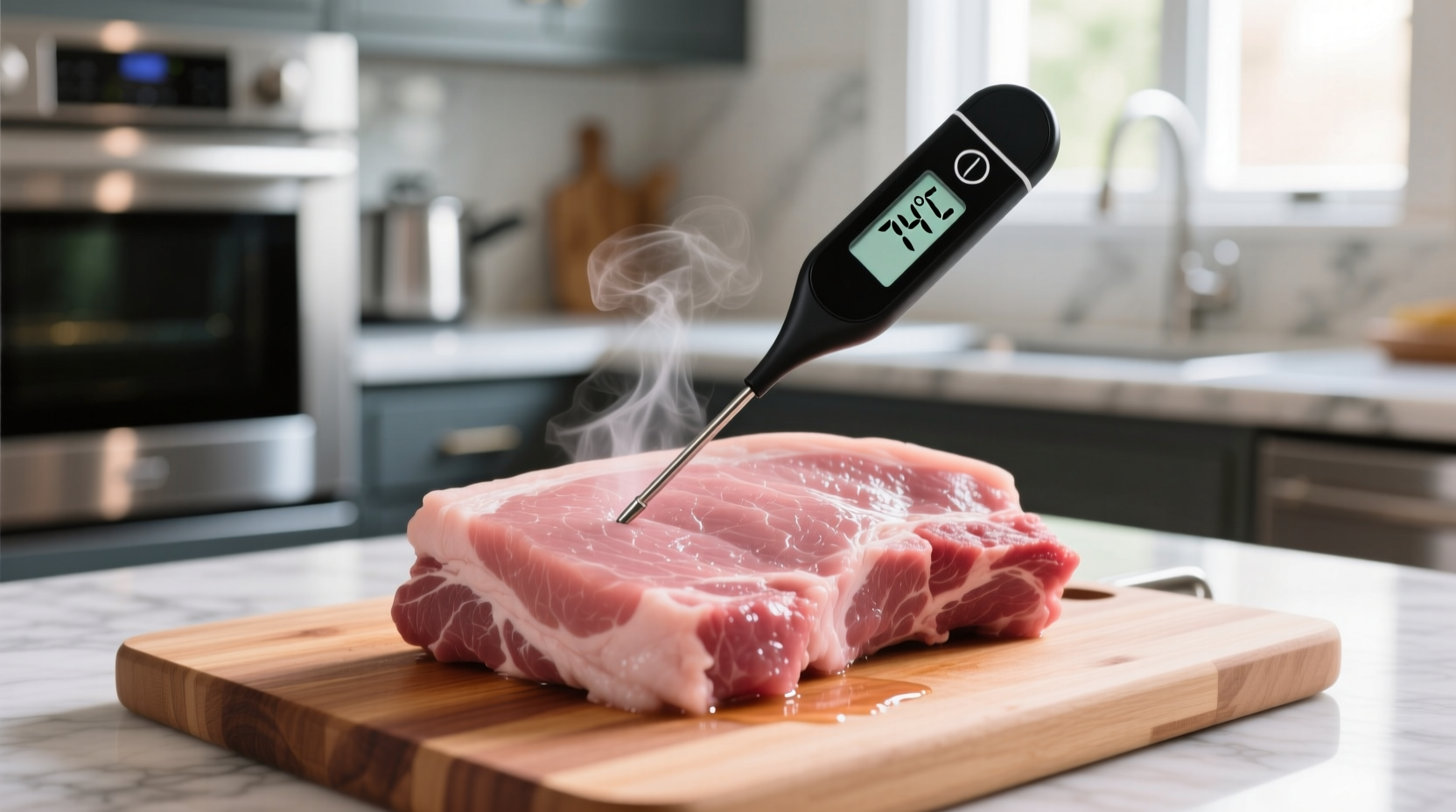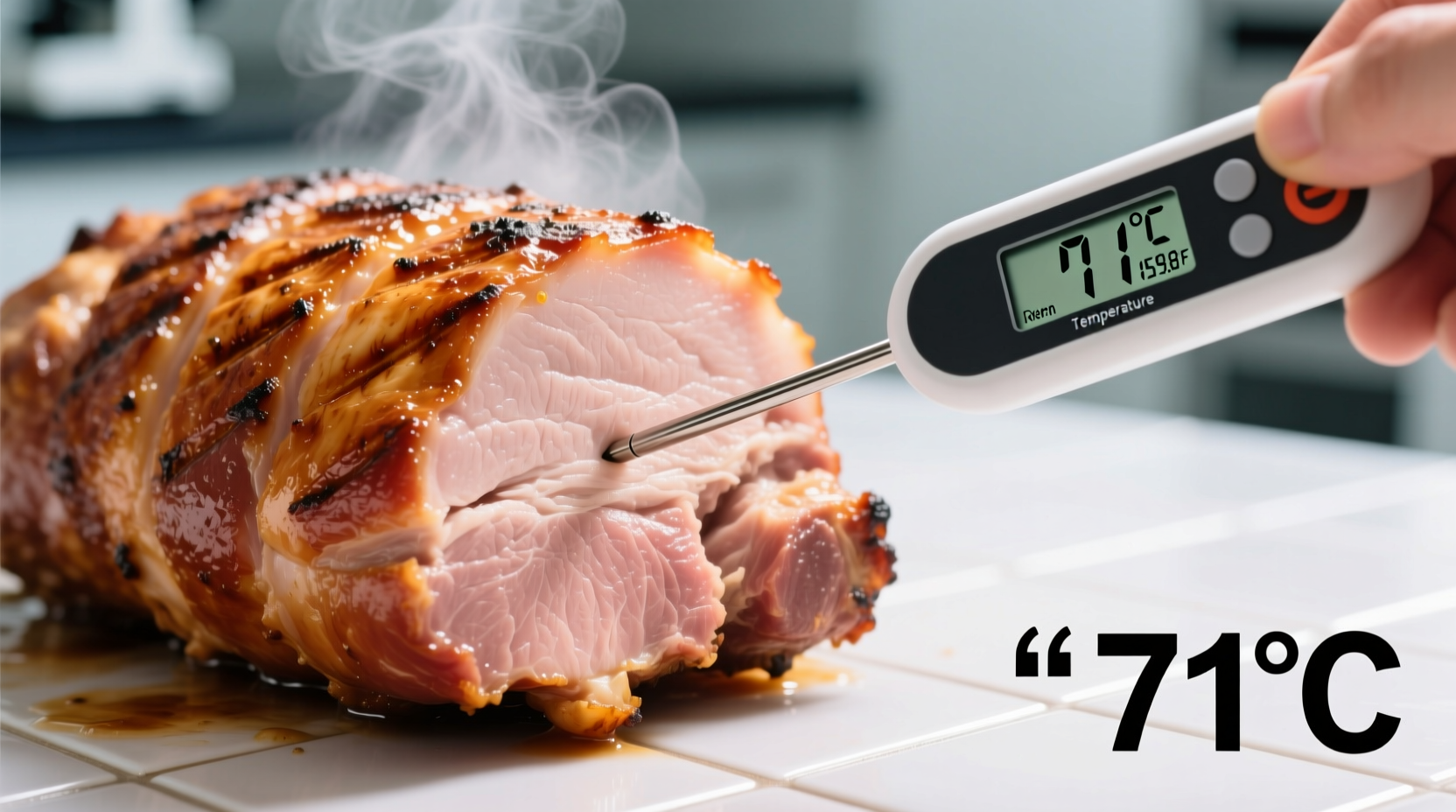For home cooks and culinary enthusiasts, understanding the precise temperature requirements for cooked pork isn't just about following rules—it's about ensuring food safety while achieving optimal texture and flavor. Modern pork is leaner than ever before, making proper temperature management essential for both safety and quality.
Why Pork Temperature Matters More Than Ever
Gone are the days when pork needed to be cooked until well-done and gray throughout. Advances in pork production and food safety research have transformed cooking recommendations. The critical threshold of 145°F with a 3-minute rest period represents a scientific consensus that balances safety with culinary excellence.
When pork reaches 145°F, it effectively eliminates pathogens including Salmonella, E. coli, and Trichinella spiralis. The subsequent 3-minute rest period allows residual heat to continue destroying bacteria while enabling muscle fibers to relax, resulting in juicier meat. This precise temperature guideline prevents both undercooking risks and the dry, tough results of overcooking.
| Pork Cut | Recommended Temperature | Rest Period | Visual Indicator |
|---|---|---|---|
| Pork chops, roasts, tenderloin | 145°F (63°C) | 3 minutes | Light pink center |
| Ground pork | 160°F (71°C) | None required | No pink remaining |
| Pork shoulder (pulled pork) | 195-205°F (90-96°C) | 20-30 minutes | Falls apart easily |
| Pre-cooked ham | 140°F (60°C) | None required | Heated through |
Evolution of Pork Cooking Standards
The journey to today's pork temperature guidelines reflects significant advancements in food safety science and pork production practices. Understanding this timeline helps explain why recommendations have changed:
- Pre-1980s: Pork was routinely cooked to 160-170°F due to widespread concerns about trichinosis, a parasitic infection
- 1980s-2000s: Improved farming practices reduced trichinosis risk, but recommendations remained conservative at 160°F
- 2011: USDA officially revised guidelines to 145°F with 3-minute rest based on comprehensive food safety research
- Present: 145°F standard widely adopted by food safety authorities including USDA, FDA, and American Culinary Federation
This evolution demonstrates how scientific understanding and agricultural practices continuously improve food safety standards. The change wasn't arbitrary—it resulted from extensive research documented in the USDA Food Safety and Inspection Service guidelines showing that lower temperatures effectively eliminate pathogens when combined with proper rest time.
Accurate Temperature Measurement Techniques
Knowing the correct temperature is only half the battle—you must measure it properly. Many home cooks make critical errors that compromise food safety:
Thermometer selection matters: Use an instant-read digital thermometer for precision. Dial thermometers often lack the accuracy needed for proper food safety monitoring. The FDA Food Code specifies that thermometers used for food safety must be accurate within ±2°F (±1°C).
Proper placement is crucial: Insert the thermometer into the thickest part of the meat, avoiding bone, fat, or gristle. For irregular cuts like pork shoulder, check multiple spots as temperature can vary significantly.

Avoid common measurement mistakes:
- Don't trust color alone—pork can remain pink even when properly cooked
- Don't remove meat from heat source to check temperature (causes heat loss)
- Don't rely on cooking time estimates—oven temperatures and meat thickness vary
- Always calibrate your thermometer regularly using ice water or boiling water method
Pork Temperature Guidelines by Cut
Different pork cuts require different approaches to temperature management. While the 145°F standard applies to most fresh pork cuts, certain preparations demand different targets:
Fresh pork cuts (chops, roasts, tenderloin): Remove from heat at 140°F to account for carryover cooking, allowing it to reach 145°F during the 3-minute rest. This prevents overcooking while ensuring safety.
Ground pork and sausages: Must reach 160°F throughout because the grinding process distributes potential surface bacteria throughout the meat.
Large cuts for slow cooking (pork shoulder, Boston butt): Target 195-205°F for pulled pork applications. At this temperature, collagen breaks down completely, yielding tender, pull-apart texture.
Pre-cooked hams: Only need to be reheated to 140°F since they've already undergone full cooking during processing.
Debunking Common Pork Temperature Myths
Several persistent myths about pork cooking temperatures can lead to either unsafe practices or unnecessarily dry results:
Myth: Pork must be cooked until no pink remains.
Reality: Pink color in properly cooked pork is normal and safe. Myoglobin (the protein that gives meat its color) can retain pinkness even above 145°F, especially in younger pigs or when using certain marinades.
Myth: If it's white, it's safe.
Reality: Visual cues are unreliable for determining safety. Pork can appear white before reaching safe temperatures, or remain pink after reaching them.
Myth: Resting time doesn't matter for safety.
Reality: The 3-minute rest period is integral to the safety equation. During this time, residual heat continues to destroy pathogens while the meat's internal temperature remains above dangerous levels.
These misconceptions often stem from outdated information. Modern pork production has virtually eliminated trichinosis risks in commercial pork, making the old requirement for well-done cooking unnecessary from a safety perspective.
Practical Temperature Management Tips
Implement these professional techniques to master pork temperature control:
- Plan for carryover cooking: Remove pork from heat source 5°F below target temperature, as internal temperature will continue rising
- Use the touch test as supplementary guidance: Properly cooked pork should feel firm but yield slightly when pressed
- Invest in a leave-in probe thermometer: For roasts and larger cuts, this allows continuous monitoring without opening the oven
- Sanitize thermometers between uses: Prevent cross-contamination by cleaning with hot, soapy water or alcohol wipes
- Record temperatures: Keep a cooking journal to refine your understanding of how different cuts behave
Remember that oven temperatures can vary by as much as 25°F from the set point, and room temperature starting points significantly impact cooking time. A thermometer eliminates this guesswork, transforming pork from a potentially tricky protein into a consistently successful dish.
Food Safety Beyond Temperature
While temperature is critical, comprehensive food safety requires attention to additional factors:
- Cross-contamination prevention: Use separate cutting boards for raw pork and ready-to-eat foods
- Proper storage: Refrigerate raw pork below 40°F and use within 3-5 days
- Thawing methods: Thaw pork in the refrigerator, under cold running water, or in the microwave—never at room temperature
- Leftover handling: Refrigerate cooked pork within 2 hours and consume within 3-4 days
The USDA's FoodKeeper app provides specific storage timelines for various pork products under different conditions, helping reduce both food waste and safety risks.











 浙公网安备
33010002000092号
浙公网安备
33010002000092号 浙B2-20120091-4
浙B2-20120091-4